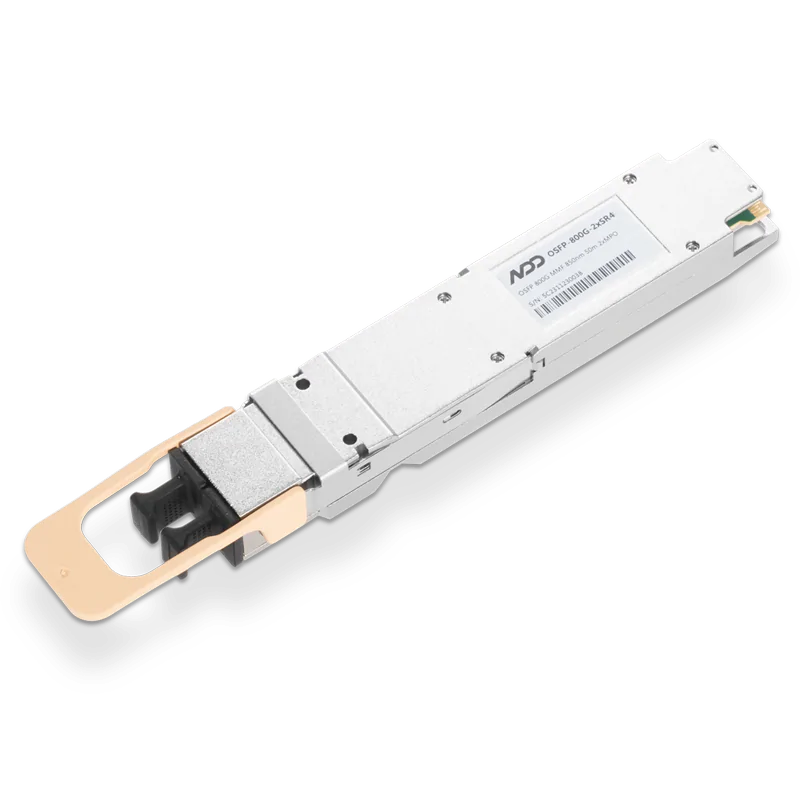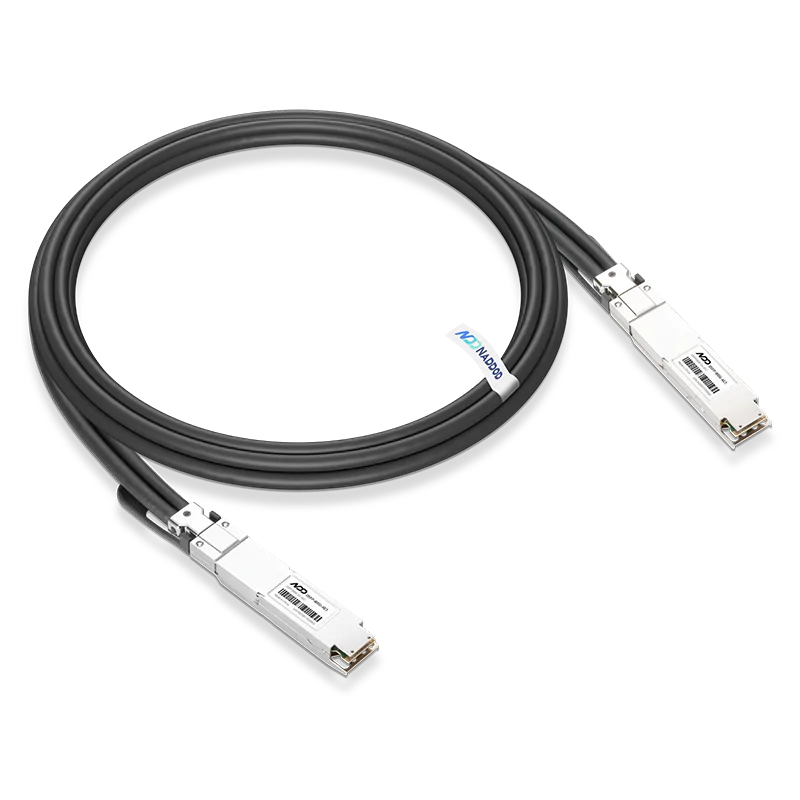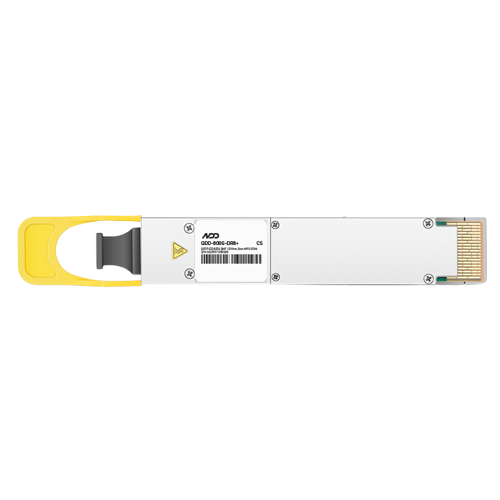In the realm of optical communication, high-speed coherent modules have emerged as a pivotal technology, playing an indispensable role in modern data transmission. This article dives into two prevalent types of coherent modules: Digital Coherent Optics (DCO) and Analog Coherent Optics (ACO), exploring their respective functionalities and significance in today’s high-speed networks.
Early coherent transceivers heavily relied on powerful digital signal processing (DSP) to handle complex optical signal processing. This dependence necessitated analog communication between the modules and the systems to cope with issues like overheating from optical devices and the DSP itself. At that stage, such a strategy was crucial to maintaining the stability and performance of the system.
However, as technology evolved, a seamless integration between DSP and optical components became achievable. Over time, DSP became more efficient, consuming less power and requiring smaller space, signaling the dawn of a new digital communication era. These advancements allowed the shift away from analog communication, leading to the rise of the digital coherent optical (DCO) modules, which combine the advantages of digital signal processing with coherent optics to form a highly adaptable and high-performance optical communication system. This integration has proven instrumental in enhancing system reliability, efficiency, and adaptability, while also reducing power consumption and minimizing the size of the modules.
Digital Coherent Optics (DCO) Coherent Modules
The Digital Coherent Optics (DCO) coherent module represents a significant step forward in optical communication technology. It works by directly modulating optical signals and is centered around the concept of intensity modulation of light. In a DCO system, information is encoded by altering the intensity of light and typically involves three critical components: the laser, the modulator, and the optical detector.
The laser is tasked with generating a powerful light beam, usually produced by a semiconductor laser, forming the basis of the signal transmission. The modulator, crucial in this setup, is responsible for adjusting the intensity of the light, often achieved by varying the refractive index or using the electro-optic effect. Types of modulators include Electro-Absorption Modulators (EAM) and Mach-Zehnder modulators, each facilitating different modulation needs. The optical detector plays the final role, converting the modulated light signals back into electrical signals for demodulation and subsequent data processing.
DCO modules excel in delivering high-speed performance while simplifying network architecture, making them especially valuable in long-distance optical communication systems, data center interconnects, and the rapidly expanding 5G networks. In Data Center Interconnect (DCI), for example, DCO modules effectively transmit large volumes of data over moderate distances, addressing the growing demand for high-speed data transfer in high-performance computing and storage environments.
NADDOD's DCO Module Lineup
One standout example in the DCO lineup is NADDOD’s QSFP-DD 400G ZR/ZR+ coherent modules. The QSFP-DD 400G ZR is a C-Band tunable coherent optical module that leverages cutting-edge 7nm DSP ASIC technology combined with ultra-narrow linewidth tunable lasers, high-speed modulators, and responsive coherent receivers. This module supports modulation formats ranging from 100G DP-QPSK to 400G DP-16QAM, making it ideal for both long-haul and metro IP over DWDM applications without the need for chromatic dispersion compensation.
 NADDOD - QSFP-DD 400G ZR+ Coherent Transceiver
NADDOD - QSFP-DD 400G ZR+ Coherent Transceiver
Similarly, the QSFP-DD 400G ZR module, also C-Band tunable, is designed for 400G DP-16QAM modulation formats and is specifically engineered for Data Center Interconnect (DCI) over DWDM applications with distances up to 120 kilometers, again without requiring inline chromatic dispersion compensation. These modules exemplify the high-performance, scalable solutions that DCO technology can provide for modern optical networks.
NADDOD - QSFP-DD 400G ZR Coherent Transceiver
Analog Coherent Optics (ACO) Coherent Modules
Analog Coherent Optics (ACO) modules operate by modulating both the phase and amplitude of light to encode information. Unlike DCO modules, which rely on intensity modulation, ACO employs more intricate modulation methods, leveraging the phase and amplitude of light waves. This often involves the use of external or phase modulators, paired with coherent receivers that decode the signals at the receiving end.
While ACO modules still use lasers as their light source, they differ significantly in how the signal is modulated. By manipulating the phase and amplitude, ACO supports advanced modulation formats like Quadrature Phase Shift Keying (QPSK) and 8-Phase Shift Keying (8PSK), enhancing spectral efficiency. The coherent receivers then detect and demodulate these signals with higher resilience to noise, ensuring better signal integrity, even in suboptimal conditions.
ACO technology’s ability to boost spectral efficiency and its robustness against noise make it ideal for long-distance optical communications and optical sensor networks. Its capability to transmit large volumes of data over extended distances, combined with its noise resilience, ensures reliable performance in demanding and challenging environments.
Differences Between DCO Coherent Modules and ACO Coherent Modules
While both DCO (Digital Coherent Optics) and ACO (Analog Coherent Optics) are coherent optical modules, they differ significantly in their integration methods and signal processing approaches.
DCO Technology
Integration Method: DCO modules integrate digital signal processing (DSP) chips directly into the optical devices, enabling digital communication between the module and the host system. This integration not only reduces the overall size of the module but also enhances compatibility across different switch and router vendors.
 Integration Method for DCO Modules
Integration Method for DCO Modules
Signal Processing Method: DCO leverages DSP for both modulation and demodulation of coherent optical signals. By manipulating the phase and amplitude of light waves using digital techniques, DCO converts complex digital data into optical signals. This digital approach allows DCO systems to monitor and adjust signals in real-time during transmission, dynamically detecting and correcting any changes or interference in the light waves, which greatly enhances system stability and reliability.
ACO Technology
Integration Method: In contrast to DCO, ACO modules use analog communication between the optical module and the host system. This means the interaction between the module and the host system occurs via analog signals, rather than digital ones.
 Integration Method for ACO Modules
Integration Method for ACO Modules
Signal Processing Method: ACO relies on advanced analog signal processing for coherent modulation and demodulation. Unlike digital methods, analog processing works more fluidly with continuous signals, aligning more closely with the natural behavior of light waves. This characteristic makes ACO particularly suited for specific analog signal applications.
DCO and ACO technologies differ primarily in their integration and signal processing methods, making them suitable for different communication environments and application scenarios. DCO, with its focus on digital signal processing, offers flexibility and dynamic adaptability, particularly in complex and high-speed digital networks. ACO, on the other hand, excels in environments where a more natural interaction with continuous light signals and analog communication is required.
Conclusion
High-speed coherent modules like DCO and ACO are paving the way for the future of optical communication. Each approach—DCO with its digitally-driven flexibility, and ACO with its analog precision—offers unique advantages that are crucial for different network environments. As optical networks continue to evolve and grow in complexity, the integration of coherent optical technologies will be key to enabling the next generation of high-performance communication systems.
NADDOD is at the forefront of this technological evolution, offering state-of-the-art DCO coherent optical modules that meet the rigorous demands of Data Center Interconnect (DCI). Our portfolio includes high-speed 800G/400G optical modules, DACs, and AOCs designed for InfiniBand and RoCE networks, ensuring reliable and scalable connectivity for high-performance computing (HPC), artificial intelligence data centers (AIDC), and edge computing. For tailored solutions that ensure superior performance, reach out to our experts today.

 800GBASE-2xSR4 OSFP PAM4 850nm 50m MMF Module
800GBASE-2xSR4 OSFP PAM4 850nm 50m MMF Module- 1Development Trends in Optical Module Technology: SiPh, Coherent, LPO, LRO, and CPO
- 2NADDOD 400G QSFP-DD Coherent Modules: A Deep Dive
- 3Opportunities and Applications of Silicon Photonics Integration in High-Speed Optical Modules
- 4NADDOD 1.6T XDR Infiniband Module: Proven Compatibility with NVIDIA Quantum-X800 Switch
- 5Vera Rubin Superchip - Transformative Force in Accelerated AI Compute


































